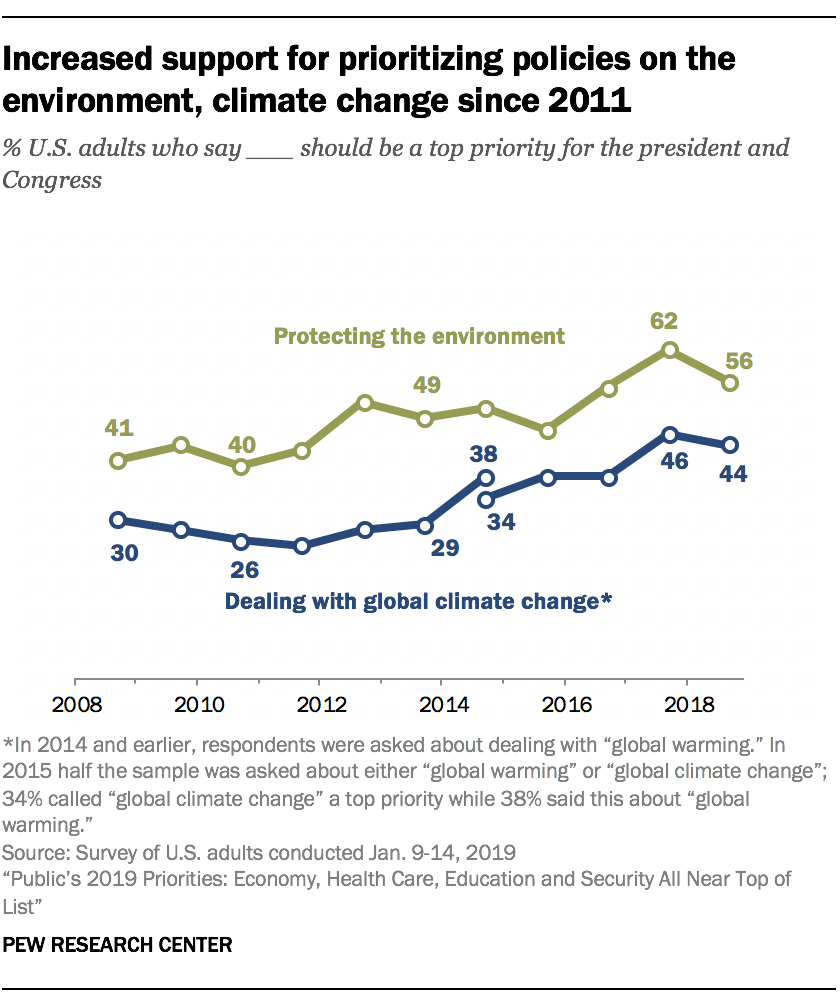Climate of Opinion
Legal Planet: Environmental Law and Policy 2019-09-03

Public opinion has been moving toward greater acceptance of the realities of climate change and the need for action. According to an April report by the Pew Charitable Trust, over half of Americans think the environment should be a priority for the next President, and over forty percent say that for climate change. Both figures are much higher than they were when Obama took office. Not surprisingly, there is a big partisan split on the issue, but among Republicans, millennials are far more pro-climate action than their elders. In general, young people are the most concerned about climate change, with the elderly on the other end of the spectrum. It’s little wonder that some Republican strategists reportedly view climate change as an “electoral time bomb.”
Growing support for climate action reflects a broader shift in American opinion to the Left. There has actually been a long-term trend toward greater belief in government regulation, dating back sixty years, with lots of ups and downs along the way. But there’s been a particularly strong movement in the past couple of years, apparently in reaction to the excesses of the Trump Administration. In a July poll, 62% of Americans disapproved of the Trump’s actions on climate change.
The age division within Republicans also highlights the need to avoid lumping categories of people together and then imagining them as homogeneous. White working class voters are a case in point. According to an article in the NY Times, here are substantial differences among members of the group. Democratic-leaning members of the group tend to be younger and are more likely to be women than Republican leaning members. The Democratic leaning members are much like other Democrats in their views. The Republican leaning members are particularly different from the Democrats on issues of race and immigration. About thirteen percent of white working class voters are unaligned politically – their views on social issues are akin to the Republicans, but they are greatly worried about economic issues. Treating working class voters as a single construct obscures all these differences.
To the extent public opinion is moving in a liberal direction, it may be difficult for the Republican Party to accommodate the trend. According to another article in the Times, the GOP is now something of an outlier internationally. The Democratic Party is just a bit to the left of the average party in Canada and Europe. But the GOP is to the Right of any of its counterparts and is veering toward far-Right parties. For instance, the Dems are much closer to the British conservative party than is the GOP.
In short, we leaving in interesting political times. To the extent that national trends favor the Democrats, that should help expand government action on climate change. But as the last election showed, Republican support is still strong, and that support may be enough to keep them in power when combined with the U.S. electoral system’s tilt toward the rural areas where the GOP is strongest.